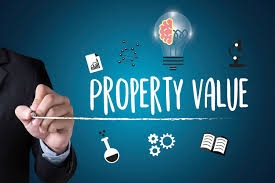Whether you are looking to buy or sell a commercial property, it’s important to be very clear on its value. Value is defined as the most feasible price the property could reasonably earn in an active, open, and competitive market when the transaction is approached fairly and knowledgeably by both buyer and seller. There are three different approaches that are typically used to value a commercial property and choosing the right method for your particular investment is essential to ensuring that it is priced correctly. Let’s look at these three approaches separately.
Value based on the Property’s Income Stream
This approach to valuing a commercial property is arguably the most accurate way to value a commercial property and is typically the preferred way that banks and property valuers will use to calculate a commercial property’s value. It is also called the CAP (Capitalisation) Rate method of valuation. This method of valuation uses a property’s “Annualised Nett Rental” divided by a “Capitalisation Rate” to give the “Value of a Commercial Building”
Where: Annualised Nett Rental = (Gross Monthly Rental of a property less the property’s Operating Expenses) x 12 months.
Gross Monthly Rental = Base Monthly Rent + Parking Rent + Storage Rent + Any Recoveries charged to a tenant etc.
Operating Expenses = Rates & Taxes, Operating Costs, Insurance, Maintenance Costs etc.
CAP Rate = The cap rate is the nett operating income of the property divided by its current market value (or sales price). Each area where a commercial property is located will have its own cap rate typically calculated by valuers based on previous sales in the area. What is the cap rate actually telling you? One way to think about the cap rate is that it represents the percentage return an investor would receive on an all cash purchase. I.e. If the property is purchased for a cash the cap rate would represent a % of the annual income of the property.
For example: Use a Gross Monthly Rental of R120,000, Less the Operating Expenses of the property – Say R 20,000 to give you an Nett monthly Rental of R 10,000. Times this by 12 Months to give you the Annualised Nett Rental. Divide this by the cap rate of let’s say 10%, and you will get you market value of R12,000,000.
Obviously this example is very simplistic in its application and there are a host of other factors that needs to be taken into account when doing valuations based on this method such as Vacancy Rates for an area, whether your tenant is paying Market Related Rentals vs lower or higher Contract Rentals etc, strength of the Tenant, the economic lookout for the environment that you operate and future maintenance obligations on the property. Cap rates typically form trends in an area and its useful to compare cap rates for different areas before making an investment decision.
Value based on the Replacement Cost
This approach is a much more complicated route of valuing a commercial property ad it assumes you have some knowledge about the area and development costs for a commercial building. You start by taking the value of the land on which a building is built. This you can get through recent sales in the area or an estimate based on a valuers’ or a commercial brokers calculation. You would then do a calculation of what it would cost to build an exact reproduction of the current existing building – here you could get the inputs from a QS or developer and it will typically work out to a specific rate per sqm. Then you would look at what it would cost to get the property in a As New condition and deduct that value from the Land and building cost value. The value of the building would be Land Costs plus the Building Costs less the Costs to Renovate the building to get it into a as new condition.
To value a commercial property on this basis you would need market information as well as construction costs.
Value based on the Market Value
This valuation method is sometimes called the Sales Comparison Approach or the Comparable Market Approach and this approach is quite arguably the simplest method to determine the value of a commercial property. This type of method compares the property in question to other properties of similar use and size, which have been sold or placed on the market in the surrounding area. A range of value is established from the findings of the market research, and from there, the number is adjusted based on the physical characteristics of the property being valued.
Factors that will likely be considered are discrepancies in the dates of the sale, age and condition of the property, square meters of the actual building and size of surrounding land, location, land to building ratio, local tax policies, and other physical characteristics based on the importance they hold in the current market and the effect they have on the particular property being valued. Basically, this number is determined by what a purchaser is likely willing to pay in an open, fair, and competitive market at any given time. A buyer may put a less or greater personal value on a property based on how it serves their needs, but this is an easy way to determine a baseline to begin negotiations between two parties.
Which Approach is Right for Me?
Now that you have a much clearer picture of each of these fundamental valuation tools, you may be wondering which method is right for your commercial property. The short answer is that each of these modalities is valuable depending on your situation.
For example, if you are going to apply for a bond or a loan to buy the commercial property you bank will typically insist on a valuation based on the income stream of the building (CAP Rate Valuation method) and will appoint a valuer to do so on their behalf. If you have access to all the data needed to determine the cap rate, The Income Stream Approach will be sufficient.
If you are doing a valuation for you company’s balance sheet or want just a quick calculation of value of a commercial building you would typically use the Replacement Cost Approach.
If you have a property where vacancy rates and rentals fluctuate and it’s difficult to determine what market rentals are for a specific area, you might consider The Market Value Approach.
Looking for Commercial Property in the Pretoria, Centurion, Midrand and East Rand regions of Gauteng?
If you’re ready to sell your commercial property or looking to invest in commercial property, it’s imperative that you are clear on a property’s actual worth. Working with a professional can help you avoid mistakes and pitfalls. At Abacus DIVISIONS, our experienced team of commercial brokers is here to make your venture a success. We have specialists in all aspects of commercial including Industrial, office, retail, healthcare and other sectors. You can’t go wrong having us on your side.

